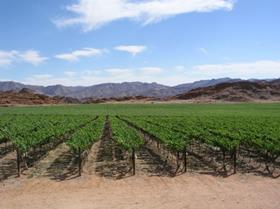
South African table grape growers have so far had a very tough season, with exports up to week two being substantially down on last year.
Recent rains in the Hex River have also wiped out the early-red and black-seedless varieties of Flame Seedless, Midnight Beauty, as well as most of the Sugraone in this late region.
Total shipments up to week two are down by 33 per cent compared with last year, according to the latest crop statistics released by the grower organisation SATI. So far only 10.7m cartons have been shipped compared to 16m cartons the previous year. This season’s shipments are also 48 per cent lower than the shipments at the same stage of the season in 2012, and 43 per cent less than the shipments up to week two in 2011.
All markets are affected, with shipments to Northern Europe and the UK at the lowest level in four years. But so far this season South East Asia has actually received more South African grapes up to week two than for the past four years. Industry observers say this may reflect the early season attention on shipments to the East to be in time for Chinese New Year.
The question now is what will happen for the rest of the season. The Orange River deal is now over, with total shipments expected to be under 13m cartons following a devastating frost last year.
At the other end of the scale the Hex River Valley had some 70mm of rain in early January and this has just about wiped out the early red, black and white seedless in this region. It is not yet clear whether the rains have affected the Crimson Seedless crop, which makes up the bulk production in the region and will be harvested later.
The rain in early January also caused damage in the Paarl, mid-season, region, with 20-30 per cent berry split being reported for those varieties that were ready to be picked. Harvesting there is running two weeks later than usual.
It is a fact that South African grapes will be in short supply this season and growers will find it difficult to fulfil all their programmes. With the South African currency having dropped more steeply against the sterling and the euro in recent weeks than in the case with the US dollar, growers may also favour the traditional markets where receivers are now screaming for supplies.



